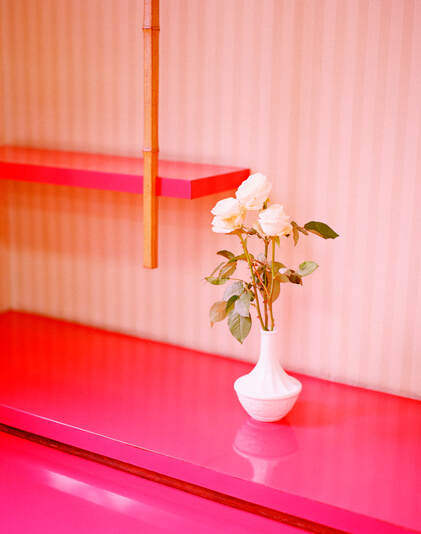 Kazuyoshi Usui's “Showa Trilogy” imagines how Japan would have been if the Showa Era in which we were born had not ended. He confronts us with a vision that blurs the distinction between fiction and reality in a setting that resembles the “real Japan”, but one that has now almost disappeared with the advent of the Olympic Games in the summer of 2020. His photographs do not constitute a fictional narrative, but rather function like headlines that invite spectators to create their own interpretation. Exploring the same theme of the imagined continuation of past time, the artist Yuki Onodera (another photographer participating in the project, Photography? Why? www.photographywhy.com), in her series “Below Orpheus”, adopted a different approach, excluding all signs of physical human presence from her images, in which the locations in and Spain and New Zealand are photographed in a way evoking suspense, as if the viewer is invited to look for traces of some disappeared person. Kazuyoshi’s work, on the other hand, frequently adopts a still life approach, presenting room interiors that are rich in details such as cheap plastic flowers, a skull, a carpet and old landline telephone. One of the photographs presented in this exhibition shows a plastic rose displayed in a Tokonoma (alcove). This flower can be interpreted as a metaphor of what is magnificently inexpensive, convincingly bold and eternally living, yet quickly consumed, in parallel to the way people lived during the Showa years. Many people who did not grow up in Japan could imagine these images to be depictions of either present-day Japan or of past Japan. Yet the country he depicts is one that the majority of people brought up in post-war Japan have never experienced. They may recognize certain elements shown within the photographic frame, but have never known this Showa era first hand, other than from watching some movies made in the 1970s and a few TV programs from the 1980s. Kazuyoshi's works are full of the kind of contradictions that are quite real in the context of everyday life. The people shown in this series, both real and fictional, can all be seen as marginal characters that it would have been unlikely to encounter in the typical shotengai (shopping street) of former times. It can be supposed that they come from somewhere quite special, at once spiritual, dark, dubious and bright. Kazuyoshi’s photographs are infused with research and a magical imagination superimposed with chance encounters in real life. This is not merely a question of choosing to spend time with marginal people met at random and subsequently photograph them. In some cases, Kazuyoshi visited places over a period of more than 5 years before taking photographs. The duality of human existence can be rife with contradiction. After the passage of new legislation in 1984 intended to combat Yakuza gangsters, the latter transformed themselves into slick, western-style businessmen. By the time the economic bubble burst in the late 1990s, Japan had come to resemble any typical western country embracing values of clean minimalism and sober design. Nobody wanted to remain stuck in a tacky, cheap and sweaty marginal lifestyle in Japan. Moreover, the reality of the Showa era, it could be demonstrated, was characterized by a considerably grimier and grayer aspect, where everybody sought to look alike. It was less colorful period, generally devoid of the eye-catching individuals featured in Kazuyoshi's photographs. It may be that nobody had ever wanted to live this way, yet this was all they had known after the Second World War. Nonetheless, through Kazuyoshi's photographs, true beauty can be discerned in this way of living with courage and dignity while displaying an aptitude for self-acceptance and even self-deprecation. It is to be borne in mind that Japan was considered a third world country until the early 1960s. Like other countries in Asia, Japan turned its back on this period of poverty, in which survival through strength in any way possible had been the rule. In Kazuyoshi’s work, there is that strength and energy of people being ready to laugh at themselves, accepting whatever life may throw at them and being proud of not merely surviving, but living.
0 Comments
Your comment will be posted after it is approved.
Leave a Reply. |
AuthorMiki, an artist, that questions and propose to share experiences with another. Archives
November 2023
Categories |
||||||

 RSS Feed
RSS Feed